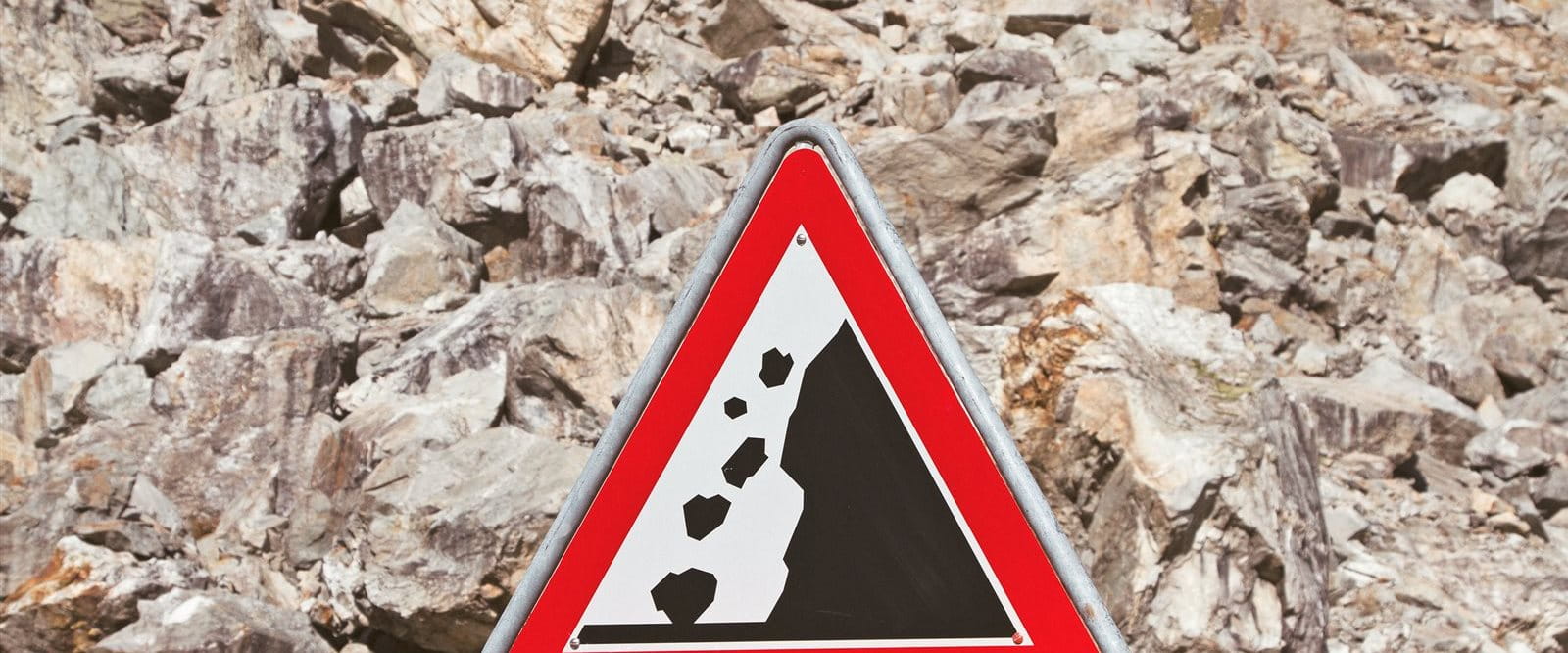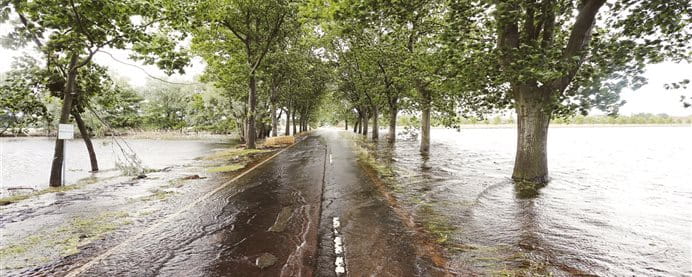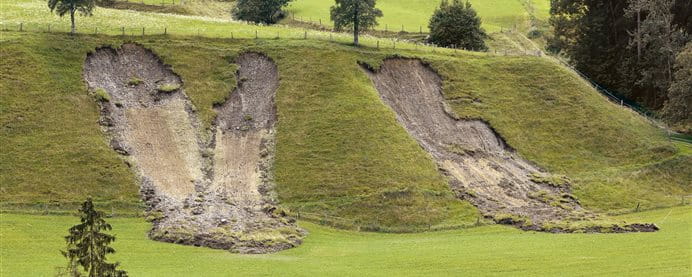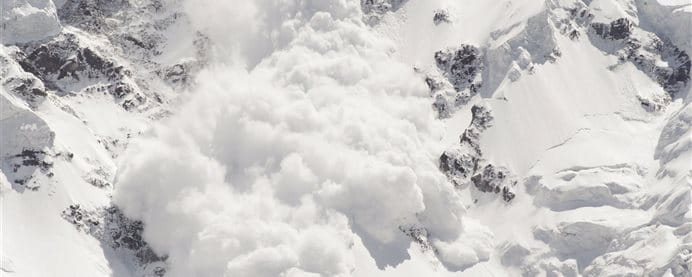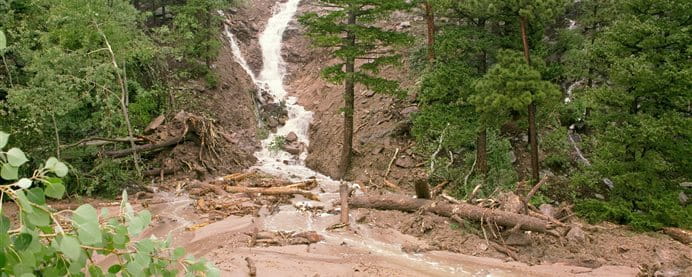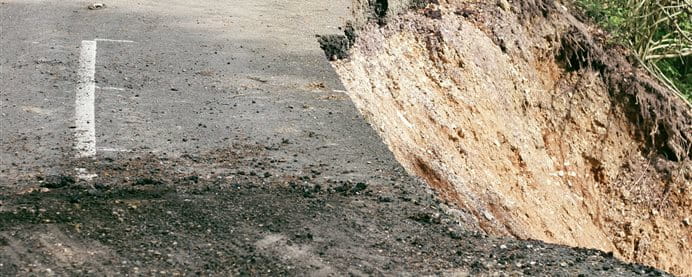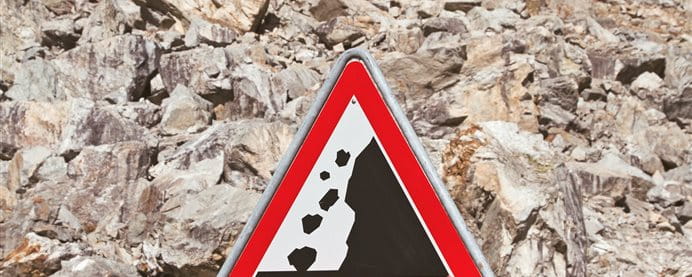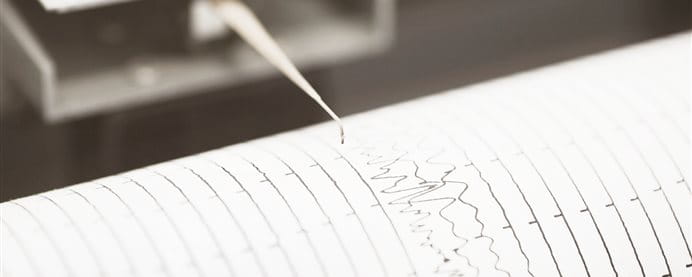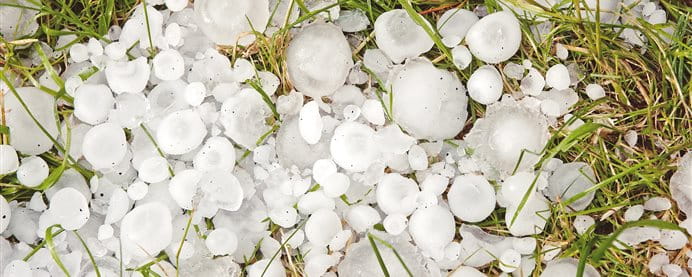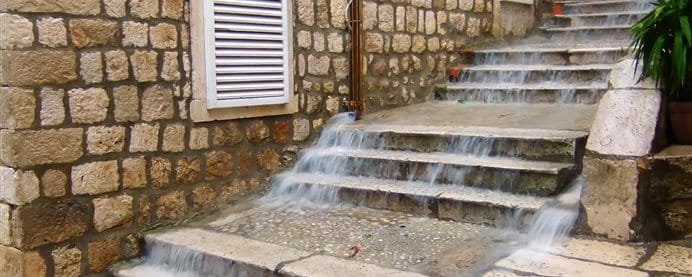Falling rocks cause millions of Swiss francs worth of damage in Switzerland. There are usually advance indications of larger scale rockslides involving cliffs and mountainsides.
Rock falls can involve individual rocks or boulders weighing many tons. These types of falls reach speeds of 150 km/h and more. Even a small rock can become a dangerous projectile. These falls are difficult to predict and can occur at any time in areas subject to this hazard. Their probability increases, however, in constantly wet weather, if it freezes at night and thaws again during the day or if permafrost melts.
If 100 cubic meter of rock or more break off, one refers to a rock slide. Indications of possible rock slides often occur days or weeks in advance in the form of rock falls or slowly widening cracks or crevices. Thanks to early warning systems, laser technology and wireless sensor networks, the authorities can measure even the smallest changes nowadays and issue appropriate warnings. For instance, they can often close off and evacuate the hazardous zones in time.
Rock slides can also involve entire mountainsides and several millions of cubic meters of material. Slides on this scale tend to be rare but pose a high level of potential danger due to their gigantic size. The Flims Rockslide about 9,500 years ago is the world’s largest known example of a massive rock slide. The area extending from Ilanz to Chur, about 30 kilometers, is covered with the rock masses from this slide. The Rhine River worked its way through these masses, forming the Ruinaulta (Rhine Canyon) between Reichenau and Ilanz in the process. The Tumen in Domat/Ems still bear witness today to this event. The latest massive rock slide took place in 1991 in Randa in the Matter Valley where some 30 million cubic meters of rock thundered down into the valley and blocked up the Vispa River.
Similar to the smaller-scale rock slides described above, there is advance notice of these massive slides entailing entire mountain sides. The inner Alpine areas of Switzerland are especially at risk, particularly in the cantons of Valais, Graubünden, Ticino and Glarus as well as in Central Switzerland and the Bernese Highlands. The Confederation and affected cantons and municipalities pay for the damage to roads or railroad tracks caused by rock falls or rock slides.
